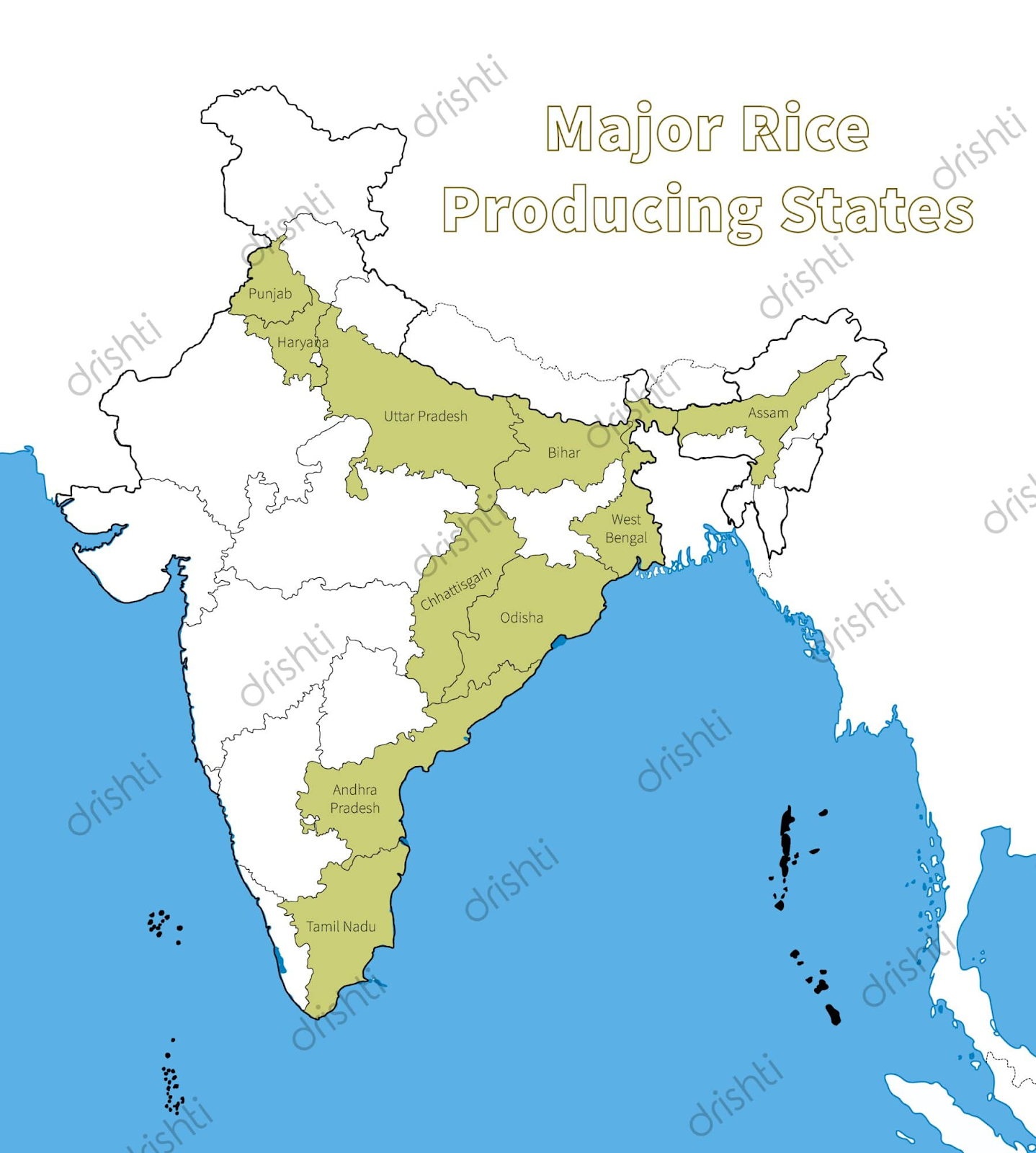Important Facts For Prelims
Supercharged Biotech Rice
- 22 Aug 2022
- 5 min read
Why in News?
Recently, the Scientists from the Chinese Academy of Agricultural Sciences have shown how a transcriptional regulator can boost grain yields and shorten the growth duration of rice.
- This ‘supercharged biotech rice’ yields 40% more grain.
Why are the Key Highlights of the Report?
- Supercharged Rice:
- The report has pointed out that giving a Chinese rice variety a second copy of one of its own genes has boosted its yield by up to 40%.
- When a second copy of a single gene (called OsDREB1C) is added to rice, it improves photosynthesis and nitrogen use, speeds up flowering and absorbing nitrogen more efficiently — offering larger and more abundant grains.
- The change helps the plant absorb more fertilizer, boosts photosynthesis, and accelerates flowering, all of which could contribute to larger harvests.
- The researchers added the same ‘native’ gene again, and not any foreign one (as in the case of BT cotton or BT soybean). This method is best described as genetic modulation.
- Gene modulation refers to the process of temporarily altering gene expression levels without making heritable changes to the underlying cellular DNA.
- It is not a genetic modification (GM) and neither is the result of a transgenic plant, carrying elements from another donor.
- Significance in India’s Context:
- This report is particularly relevant to India, which must aim to continue its world position in the production of rice and marketing.
- India is the world’s largest exporter of rice. It exported 18.75 million metric tons to over 150 countries during the year 2021-22, thereby earning $6.11 billion.
- Vietnam was the second largest producer of rice.
- With growing demand in the coming years, strategies should be found to increase the production and export of rice and it has to be much more than the 18.75 million tons for India to continue and expand its role as the world’s largest producer and exporter of rice.
- India has some excellent rice researchers located in Andhra Pradesh, Karnataka, Punjab and Haryana, and genetic engineers in several laboratories across the country.
- The Ministry of Agriculture & Farmers’ Welfare can come together with the Department of Biotechnology (DBT) and nutritionists from the Indian Council of Medical Research (ICMR) can support these researchers to augment India’s role as the major rice exporter in the world.
What are the Important Points about Cultivation of Rice?
- It is a kharif crop which requires high temperature, (above 25°C) and high humidity with annual rainfall above 100 cm.
- Rice is grown in the plains of north and north-eastern India, coastal areas and the deltaic regions.
- Deep clayey and loamy soil is the ideal type of soil for growing rice.
- Leading producer states of rice are West Bengal, Uttar Pradesh, and Punjab.
- High yielding states are Punjab, Tamil Nadu, Haryana, Andhra Pradesh, Telangana, West Bengal and Kerala.
- In southern states and West Bengal, the climatic conditions allow the cultivation of two or three crops of rice in an agricultural year.
- In states like Assam, West Bengal and Odisha, three crops of paddy are grown in a year; these are Aus, Aman and Boro.
- High yielding states are Punjab, Tamil Nadu, Haryana, Andhra Pradesh, Telangana, West Bengal and Kerala.
- It is the staple food crop of the majority of Indian people.
- India is the second largest producer of rice in the world. About one-fourth of the total cropped area in India is under rice cultivation.
- National Food Security Mission, Hybrid Rice Seed Production and Rashtriya Krishi Vikas Yojana are a few government initiatives to support rice cultivation.
UPSC Civil Services Examination, Previous Year Questions (PYQs)
Q. Consider the following crops: (2013)
- Cotton
- Groundnut
- Rice
- Wheat
Which of these are Kharif crops?
(a) 1 and 4 only
(b) 2 and 3 only
(c) 1, 2 and 3
(d) 2, 3 and 4
Ans: (c)





